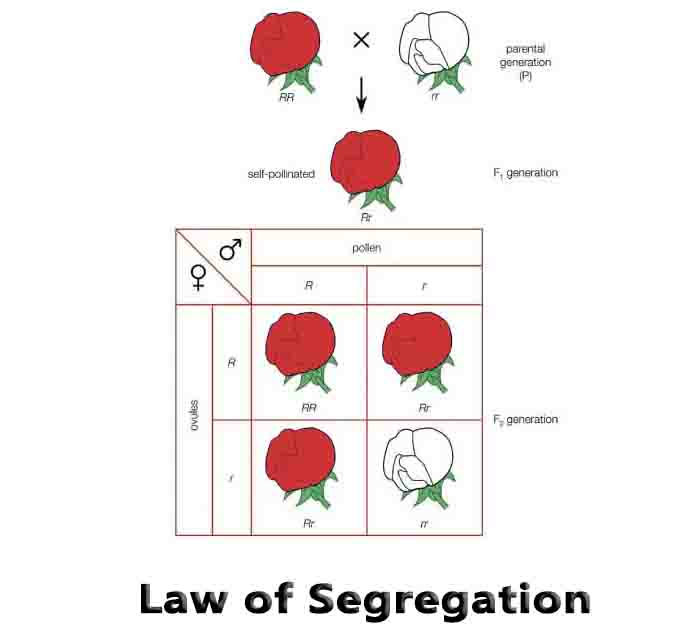Law of Segregation Definition
Gregor Mendel’s law of segregation states that the two alleles for each trait segregate, or separate, during the formation of gametes, and that during the formation of new zygotes, the alleles will combine at random with other alleles.
The law of segregation ensures that a parent, with two copies of each gene, can pass on either allele. Both alleles will have the same chance of ending up in a zygote.
In sexually reproducing organsisms, the genome is carried in two identical copies. A copy was inherited from each parent, in the form of a gamete. These organisms are known as diploid when they have both copies of the genome, and haploid when they are gametes and have only one copy.
Though Gregor Mendel was not clear on exactly how the process took place, modern microscopes and molecular techniques have revealed that alleles are separated during the process of meiosis.
Meiosis occurs in specialized cells known as gametocytes, which form haploid cells from diploid cells. In order for the ploidy of the cell to be reduced, the chromosomes in the cell must be equally divided. To start the process, all of the DNA in a cell is duplicated. This creates two copies of each allele.
In this cell, there are now 4 alleles for each gene, although 2 of them are simply identical copies of the original 2. As meiosis begins, the chromosomes condense and align with their homologous pairs. Homologous chromosomes are those which contain identical portions of DNA, originally inherited from different parents.
During prophase I of meiosis I, the homologous chromosomes bind together. Special sections of the DNA can overlap, causing breakages in the DNA. Due to the similarity of the DNA, the breaks simply exchange segments in a process called crossing-over. This crossing-over helps establish both the randomness of allele inheritance and also the separation of different genes.
The separation of different genes during meiosis is known as the law of independent assortment. During metaphase I of meiosis I, these bonded homologous pairs are aligned in the middle of the cell and separated. In doing this, the different alleles for each gene are affectively separated.
During meiosis II, the copies of the alleles will be separated into individual gametes. This insures that each allele makes it to a new gamete, giving it an essentially equal chance of finding a gamete to fuse with and create a new organism.
Due to the law of segregation each allele is its own entity and always has an equal chance of being passed on to the next generation. This means that regardless of whether the allele is dominant or recessive in its relationship with the other allele it will be passed on in the same way, with the same frequency.
The law of independent assortment states that while genes may exist on the same chromosomes, they too are inherited independently of each other due to the mechanisms of meiosis.
Related Biology Terms
- Law of Independent Assortment – Genes for different traits are independently assorted into separate gametes.
- Meiosis – Cell division that reduces the amount of genetic information to form gametes.
- Mitosis – The process of cell division that simply replicates cells.
- Gene – A segment of DNA that carries information for a specific protein, which may have many different versions, or alleles.

